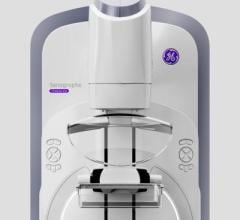Matakina International announced that The Hospital of Central Connecticut (HOCC) is the first facility in Connecticut to adopt VolparaDensity breast imaging software, designed to help overcome the limitations of mammography to detect cancer in women with dense breasts. The Enterprise installation of HOCC provides the ability to offer objective volumetric breast density values for mammograms performed at six facilities on eight Hologic full-field mammography systems.
Serving Greater New Britain, Conn., The Hospital of Central Connecticut’s comprehensive breast program is the first such program in Connecticut to be recognized as a Certified Quality Breast Center of Excellence in the National Quality Measures for Breast Centers Program. This distinction signifies the hospital’s commitment to providing the highest level of quality health care to patients in its community.
“Utilizing VolparaDensity allows us to remove the subjectivity from the evaluation of breast density to be more consistent in our measurements, from time to time, image to image, mammogram to mammogram, and radiologist to radiologist,” said Jean Weigert, M.D., FACR, director of breast imaging at HOCC. “This consistency means our screening process is more accurate for our patients. For example, if we base decisions to perform more testing on subjective values, we may include women who do not need supplemental imaging and exclude women who do. This automated, volumetric density measurement tool helps ensure that the proper women are being evaluated in a proper, consistent manner.”
At the 2013 Annual Meeting of the American Roentgen Ray Society, Weigert presented results of a study with co-author Sarah Steenbergen, M.D., of Yale University in New Haven, Conn. regarding the impact of the pioneering breast density inform bill in Connecticut. Results of the study, “A Connecticut Initiative: Screening Breast Ultrasound in Women With Dense Breasts—Two Years of Data,” demonstrated that ultrasound after mammography on women with greater than 50 percent breast density can detect additional cancers with a sensitivity of 98.5 percent and specificity of 95.6 percent.
“Before the Connecticut density inform law was enacted, I was not convinced that we had enough data to support an expanded screening program. Now, research confirms that we are finding more cancers and I believe that the ability to give reliable breast density information to patients not only improves screening but makes me a better doctor in the process,” added Weigert.
VolparaDensity, which has been integrated into HOCC’s Fuji Synapse PACS, can be displayed on digital mammography and PACS workstations, and in addition to Hologic, supports all major commercially available digital mammography systems, including GE, Siemens, Fuji, Philips, IMS Giotto and Medi-Future.
Cleared by the FDA, HealthCanada, the TGA and CE-marked, VolparaDensity is in use at sites across the globe helping radiologists assess breast density more objectively and helping them better consider who might benefit from additional screening. Highly correlated to breast MR assessments, VolparaDensity generates an objective, automatic measurement of volumetric breast density and a FDA cleared BI-RADS breast density category.
Breast tissue density has not only been linked to an increased risk of cancer, it also decreases the sensitivity of the mammogram and thereby may impact early detection. Thirty-five percent of breast cancer goes undetected by mammography in women with dense breasts, as density masks the appearance of tumors (Boyd et al 2007, NEJM). Since both dense breast tissue and cancer appear white on a mammogram, finding cancers can be analogous to looking for a snowball in a snow storm.
“The Hospital of Central Connecticut operates one of the top breast centers in the nation and we are pleased to work with Dr. Weigert to implement VolparaDensity as part of their breast cancer screening program,” said Ralph Highnam, Ph.D., CEO of Matakina International. “Offering consistent volumetric measurement of breast density regardless of the manufacturer of the mammography system, facility, technologist or reading environment, VolparaDensity will provide the best possible results, particularly among women for whom mammography alone may not be enough.
"Dr. Weigert was one of the lead authors in a sentinel paper on the use of ultrasound in addition to traditional mammography to screen women with dense breasts, and we are proud that VolparaDensity is being used to continue this critical work.”
For more information: www.volparadensity.com


 April 24, 2025
April 24, 2025 








